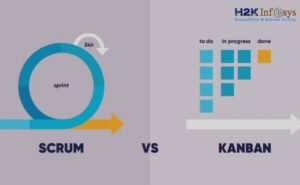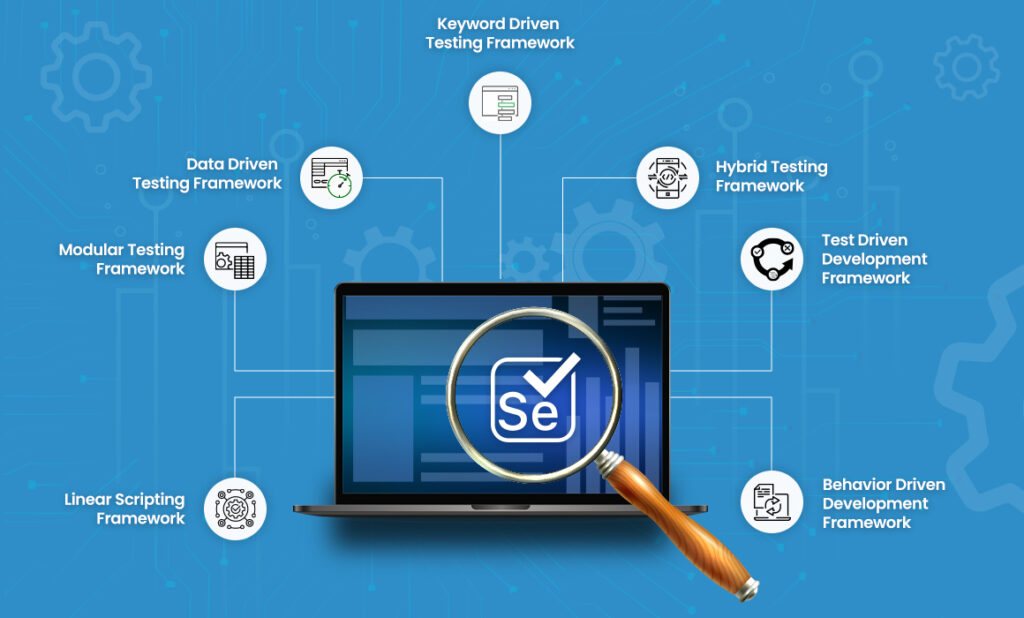Agile is a distinct software development approach that includes various methods where requirements and solutions are developed collaboratively through teamwork, ongoing planning, and ongoing learning. Teams may deliver products more quickly and with improved quality, predictability, and flexibility to adapt to change by implementing Agile.
Despite Agile being established in 2001, it remains a very popular methodology used in 2022. Why is that?
Every firm hopping on the Agile transformation bandwagon to produce software or a version is credited for the popularity of the agile methodology. If you learned software development decades ago utilising the waterfall software development technique, the Agile methodology at least has some influence on your job today. Agile focuses on maintaining a lean process and producing minimum viable products (MVPs) that go through numerous iterations before moving on to the final product. In this agile technology, everyone is working together towards a single and defined goal.
The possibility of needing to spend a lot of time when adjustments are needed is eliminated by agile methods. Instead of collaborating with other teams, it enables teams to work directly with clients. This offers a clear result and a targeted objective in a gradual manner. Agile was deemed more beneficial to organisations than the waterfall approach from a number of angles. Agile is well-liked outside of the IT sector in the manufacturing, FMCG, and auto industries.
Here are some crucial benefits of Agile that make it still popular in 2022. Meanwhile, you can learn more about Agile by joining a reputable Agile Scrum training program.
1.Agile is Flexible: a human-centred software development
The Agile project management style has set 97% of the firms polled for the most recent State of Agile Report free from the cumbersome, slow-moving standard of decades past. Agile has demonstrated a noteworthy potential to boost productivity and revenues in addition to being inspired by a vision of software development that regards developers as people rather than assets. In fact, 95% of the businesses that employ agile methodologies state that their development methods and outcomes have improved. In addition, the Harvard Business Review reports that some businesses realise a 60% increase in sales and profitability when they move away from conventional, cumbersome project management.
Agile has quickly established itself as the project management industry’s preferred beverage.
The goal of the Agile methodology isn’t to create processes; rather, it’s to concentrate on valuing software developers as people rather than assets, in order to deliver high-quality products to customers based on their regular feedback. In other words, Agile is firmly entrenched in the idealistic spirit that propels software companies, and other industries, to embark on ambitious endeavours.
With Agile becoming more and more popular, it is clear that the best method to produce a groundbreaking product is to regularly acquire and apply feedback, place an emphasis on cross-team cooperation, and leave room for developers to be creative.
2.Agile is Faster and Smaller.
Other approaches to software development concentrate on the pre-planned steps of understanding customer needs, planning the project, developing the software, creating the product, testing it, and delivering the results. This process can take several months or even years. Agile, however, focuses on releasing the first iteration in a matter of weeks or the full software package in a matter of months.
3.The Agile Methodology focuses on the client and the outcome.
Enterprise-wide adoption of Agile best practices will enable timely, high-quality delivery of satisfied clients’ orders. The key driver of Agile’s success is satisfied clients. Customers are involved throughout the entire Agile process to receive updates on their goods and guarantee they match their needs.

4.Multiple Agile Methodologies Can be Used.
The techniques used in agile software development include Scrum, Kanban, eXtreme Programming (XP), Dynamic Systems Development Method (DSDM), Feature Driven Development (FDD), Adaptive Software Development (ASD), Lean Software Development (LSD), and Crystal. Scrum and Extreme Programming are the two most widely utilised Agile methodologies (XP).
5.Agile Enhances Productivity.
Agile is designed to increase production, and as a result, it fosters a certain culture that is centred on productivity. Agile’s transparency has made it simple for teams to comprehend the explicit objectives of each iteration.
6.A Critical Method in Agile: INVEST.
INVEST is a further essential component of Agile productivity. An acronym for a checklist. INVEST stands for: independent, Negotiable, Valuable, Estimable, Small stories, and Testable.
7.Agile is Trustworthy.
Agile teams are self-organising, and they create their path rather than following a manifesto of rules. They are clear about their goals and work on them.
Conclusion
Every year, more and more businesses, both software-related and not, turn to Agile to streamline operations and develop faster, and a good reason is that its collection of guiding principles can be combined with almost any methodology already in use. Given the numerous modifications that Agile has undergone since 2001, the future is bright and promising. You can get into this field by enrolling in an Agile online training.



























